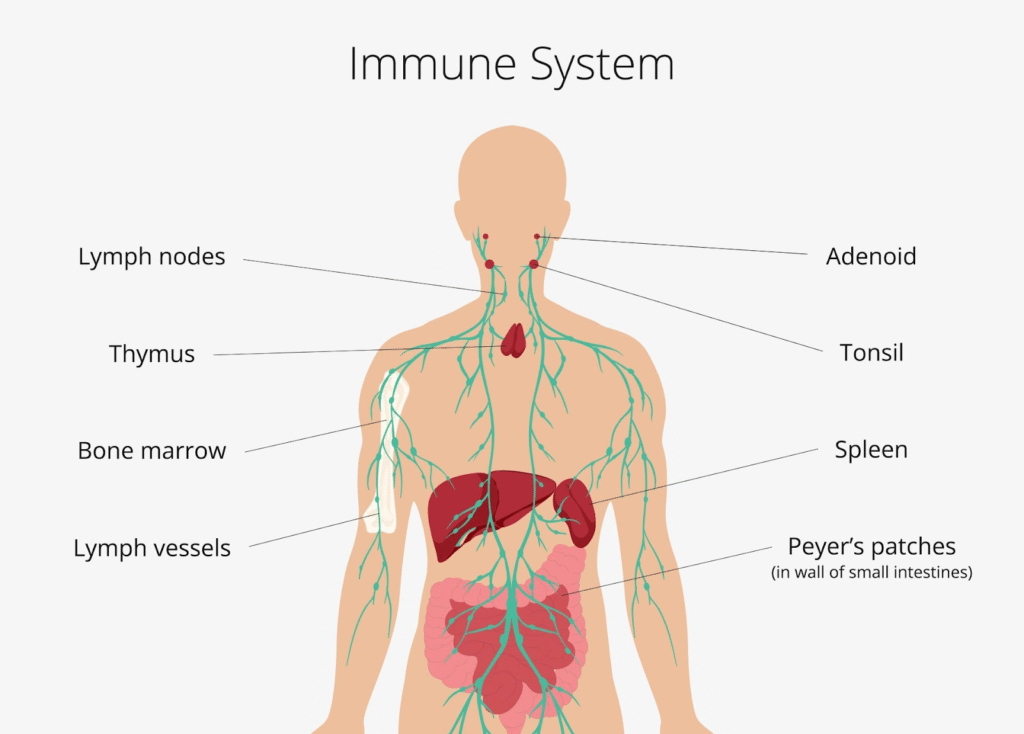
Genetic reports have exposed many genes linked to both popular and exceptional disorder, but to realize how those genes deliver about condition and use those people insights to enable develop therapies, researchers need to have to know the place they are active in the overall body. Analysis on solitary cells can enable attain this aim, by surveying gene activity in certain mobile kinds. Experts need to profile all mobile types and assess them throughout organs in the overall body to learn about the comprehensive range of human ailments, but this is difficult to do with existing solutions.
Now researchers at the Broad Institute of MIT and Harvard have designed a robust experimental pipeline that can profile many much more cell types from much more tissues than can be examined with other tactics, as effectively as equipment mastering methods to place this knowledge together and question the ensuing map, or atlas. The workforce utilised it to pinpoint particular cell types from many tissues included in many ailments. Their technique will empower other large-scale studies of varied mobile kinds and comparisons across tissues, which include cells from frozen tissue that can be gathered from numerous people. This function opens up a prosperity of samples saved in analysis collections all around the globe for this form of one-mobile examination, and also brings researchers a large stage closer in the direction of their objective of a human cell atlas that catalogs just about every cell sort in the human human body, in a significant quantity of people today from numerous backgrounds.
Previous single-cell research have mainly concentrated on one particular tissue kind at a time, to generate tissue-precise maps. Applying their new pipeline, the team created a large atlas of hundreds of countless numbers of cells across various tissues in the body. This permitted them to uncover surprising new features and gene expression programs for various cell forms, these as muscle cell packages being expressed in lung connective tissue cells. The conclusions also unveiled genetic similarities between cells in diverse tissues, and joined specified cell types to certain health conditions for the first time.
The atlas is the initially cross-tissue atlas to be based on measurements of gene exercise inside personal mobile nuclei, which permitted the crew to capture a higher variety of cell forms than existing strategies that measure gene expression from the complete cell.
The researchers say their atlas will spur a lot of new scientific tests on health and illness, and have overtly shared it with the scientific neighborhood through the GTEx portal and the Broad’s Single-Cell Portal.
This study is aspect of the international Human Mobile Atlas (HCA) consortium, which is aiming to map every single mobile style in the human system as a basis for both of those being familiar with human wellbeing and for diagnosing, monitoring, and managing condition. An open up, world, scientist-led consortium, HCA is a collaborative effort and hard work of scientists, institutes, and funders around the globe, with extra than 2,300 associates from 83 international locations across the globe.
The paper is just one of four main collaborative studies for the Human Cell Atlas revealed in Science this 7 days, which have made thorough and overtly out there cross-tissue cell atlases. The complementary scientific tests shed light on overall health and ailment, and will lead in the direction of a solitary Human Cell Atlas.
“These reports signify a essential second for single-cell investigate and the Human Mobile Atlas,” mentioned Aviv Regev, co-senior author of the study who was a main institute member at the Wide when the examine began and is presently head of Genentech Research and Early Progress. “In our analyze, we have revealed that this technique can produce very important insights about the part of cells and tissues in many ailments, which will spark new scientific and biomedical inquiries aimed at a shared aim of revolutionizing medicine.”
The proper groups at the ideal time
About the last decade, Regev and others in the Klarman Cell Observatory at the Wide have been leaders in acquiring and applying tactics that assess the gene activity, or RNA expression, inside of particular person cells, but these methods you should not get the job done nicely on big cells from body fat or muscle mass tissues or on fragile cells like neurons. So experts in the Regev lab began creating new methods that could be applied to a broader variety of mobile styles by isolating the cell’s nucleus for RNA measurement, relatively than the complete mobile. In addition, these approaches can conveniently be utilized to frozen, alternatively than refreshing tissue, which will empower researchers to obtain the significant numbers of samples required to capture a variety of human populations about the globe.
In parallel, another team of Broad scientists understood they would profit from that exact same strategy. Broad researchers with the Genotype-Tissue Expression (GTEx) venture, funded by the Countrywide Institutes of Well being, had been documenting how smaller changes in DNA sequence, together with sickness-affiliated variants, can effects gene expression across dozens of tissues in the human body. Because 2010, they’ve analyzed dozens of tissue styles from hundreds of donors making use of strategies that method tissue into a bulk combination, but they wanted to see how genetic variation altered personal cells.
“We essential a extra exact glance at cells inside of tissues, since the mobile is wherever biology occurs, each in well being and disease,” said institute scientist Kristin Ardlie, co-senior creator on the new examine and director of the GTEx Laboratory Information Evaluation and Coordination Centre at the Broad.
Current one-mobile RNA sequencing approaches can be made use of to analyze clean tissues, but the samples in GTEx’s tissue financial institution ended up all frozen. Ardlie and her crew suspected that the one-nucleus methods remaining formulated in Regev’s lab could give them a potent way to assess their banked frozen samples—and additional cell sorts inside them—while delivering their colleagues with a detailed assortment of human tissues they could use to benchmark the one-nucleus solution.
“The two teams essential every other, at the ideal time, to create a novel way of scaling up these research,” mentioned examine co-initially author Gökcen Eraslan, a postdoctoral fellow at Genentech who was a member of the Klarman Cell Observatory when the study commenced.
Charting a new form of mobile atlas
In the new analyze, the GTEx workforce, the Regev lab, and their colleagues collaborated to develop a new substantial-scale single-nucleus sequencing pipeline. In an effort and hard work led by Orit Rozenblatt-Rosen, government director of mobile and tissue genomics at Genentech who was scientific director of the Klarman Mobile Observatory for the duration of the analyze, the team initial optimized four distinctive solitary-nucleus protocols and then made use of them to review 200,000 cells in frozen samples of 8 tissue styles that were initially collected by the GTEx project. They used a deep-understanding-based design to compare cell profiles across tissues, donors, and techniques, and confirmed that their one-nucleus profiling pipeline carried out as properly as gold regular methods for measuring RNA in single cells, while capturing cell styles that one-mobile methods could not seize.
The scientists produced a cross-tissue molecular reference map that reveals important facts on the mobile varieties residing in many tissues. “With these new systems, we are ready to chart cells across nutritious tissues in the human system,” stated Rozenblatt-Rosen. “Doing so offers us a comprehensive foundation for understanding what goes awry in ailment.”
The researchers also demonstrated that the approach can deliver new biological insights, which may spark new studies linking the conclusions to health and illness. For instance, in all tissues, the team observed two populations of a type of immune cell identified as macrophages: a single population that performs an immune purpose and a different that supports the tissue’s operate, with distinct proportions of each located in various tissues. The getting allows clarify how tissues attain self-controlled equilibrium, or homeostasis, and how a style of white blood mobile called monocytes experienced into macrophages with unique capabilities. In the lung, they also noticed connective tissue cells called fibroblasts that specific gene plans ordinarily connected with muscle mobile perform, suggesting a yet unappreciated purpose for these cells in the lung tissue.
To check out the atlas’s capability to assistance experiments of illness, the workforce up coming turned to a catalog of Mendelian disorders, which are induced by alterations to a one gene. The scientists cross-referenced the regarded 6,000 genes fundamental these problems with gene-degree knowledge from their atlas and identified new mobile sorts that could be concerned in sickness, this kind of as non-myocyte cell styles that might participate in a position in muscular dystrophy. They also demonstrated the price of the atlas in proposing recognized and new cell varieties that may well affect a range of popular health conditions and features, like coronary heart disease or inflammatory bowel illness, by evaluating genes enriched in specific mobile styles to genes prompt by whole-genome affiliation experiments.
“This kind of cross-tissue cell atlases can enable researchers realize the will cause of comorbidities and how genetic variants can predispose to many health conditions or problems in the same man or woman,” explained Ayellet Segrè, co-senior writer of the study who is a Wide associate member and assistant professor at Mass. Eye and Ear and Harvard Health care Faculty.
The scientists think their tactic now sets the stage for reports of bigger scale, in hundreds of persons or much more from various ancestral backgrounds, to additional explore the genes and cells fundamental equally scarce and popular diseases.
“Profiling multiple tissues is the only way to see this level of depth,” said Eraslan. “We have often preferred to be able to profile the entire human human body. In the past it is not been possible, but the know-how and algorithms are experienced more than enough to do this now. We’ve been waiting for this instant to come and now it can be in this article.”
The operate was also led by Eugene Drokhlyansky, senior principal scientist at Bristol Myers Squibb who was a postdoctoral researcher at the Wide through the research, and François Aguet, a principal investigator at Illumina Synthetic Intelligence Lab and former team chief in the Broad’s Cancer Application.
A one mobile variety map of human tissues
Gökcen Eraslan et al, Solitary-nucleus cross-tissue molecular reference maps in the direction of being familiar with ailment gene function, Science (2022). DOI: 10.1126/science.abl4290. www.science.org/doi/10.1126/science.abl4290
Citation:
Massive one-cell atlas across human tissues highlights mobile forms wherever condition genes are active (2022, May possibly 12)
retrieved 16 May possibly 2022
from https://phys.org/news/2022-05-huge-solitary-cell-atlas-human-tissues.html
This doc is subject matter to copyright. Aside from any reasonable working for the reason of private examine or analysis, no
component may perhaps be reproduced devoid of the published authorization. The material is supplied for details purposes only.





More Stories
Human Immune System Wonders Explained
Human Immune Pathways and Your Vitality
Human Immune Support Through Exercise